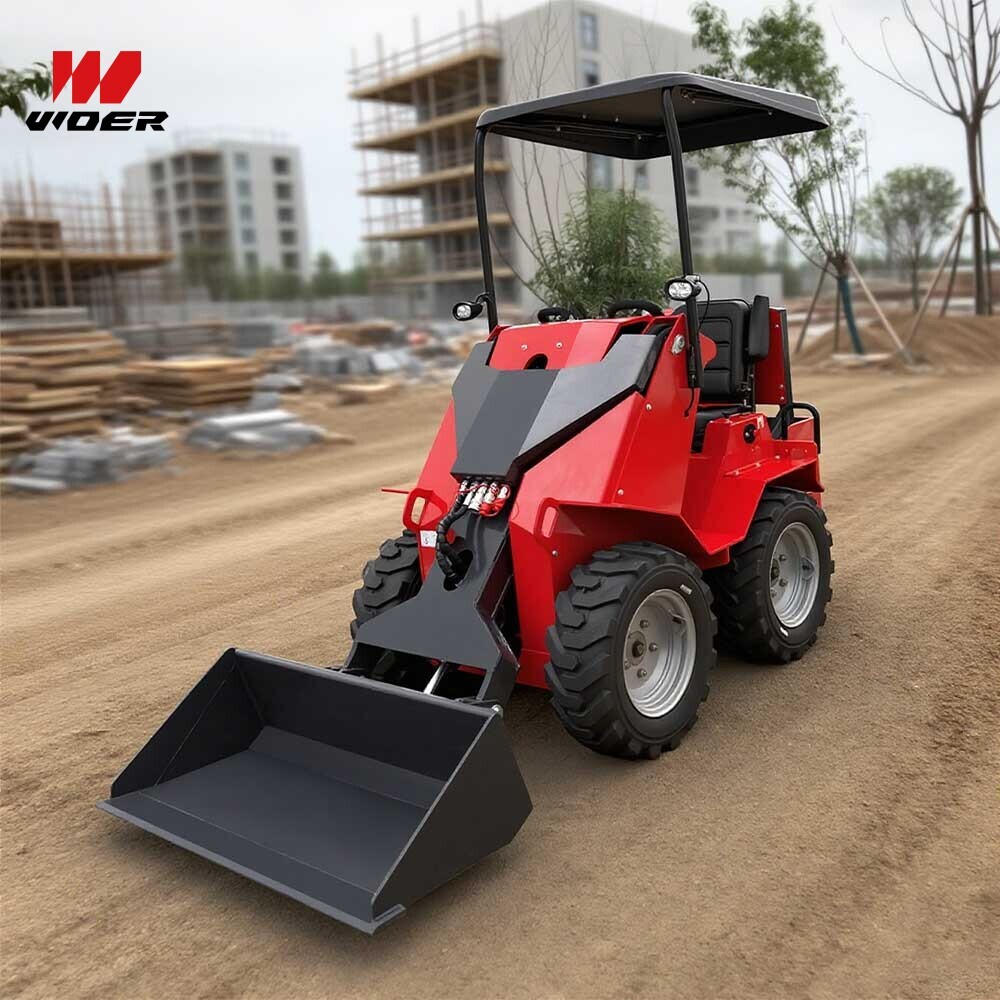Navigation
Contact us
Phone
Message

Comparative Overview: skid steer loader crawler loader vs track
When evaluating a skid steer loader crawler loader against traditional wheeled skid steers, the critical factors are ground contact, flotation, lift geometry, and maintenance profile. Mini steer skid loader models excel in tight-yard maneuverability; mini crawler skid loaders offer superior traction in muddy or uneven sawmill yards. For procurement teams and operators alike, understanding these trade-offs is essential to specify the right machine and control total cost of ownership.
Mobility and Traction
Track-equipped machines provide continuous ground contact, which reduces ground pressure and improves traction. This advantage is decisive in forestry yards with wet chips, soft soils, or steep terrain. By contrast, wheeled skid steer models are faster on hard surfaces and easier to transport between sites. For buyers focused on site versatility, consider the mini skid steer diesel crawler loader option to combine diesel torque with track flotation.
Stability, Lifting Capacity and Precision
Crawler loaders typically deliver more stable lift performance when moving heavy loads on slopes or soft ground. The tracked undercarriage reduces roll and pitch, allowing safer, higher-target-lift operations—useful when feeding debarkers or loaders. However, stand-on skid steer loader mini and mini walk behind skid steer loader formats often offer tighter turning radii and faster cycle times for repetitive in-yard handling.
Maintenance, Durability and Serviceability
Tracks can be more durable in abrasive environments but demand different maintenance (track tensioning, sprocket inspection, undercarriage wear checks). Wheeled skid steers require tire management and are susceptible to punctures. Technical teams should compare service intervals, spare-part availability, and on-site repairability in vendor proposals. Compliance considerations like track skid loader epa or epa skid steer loader designations may influence emissions equipment and maintenance schedules.
Side-by-side Comparison Table
Application Scenarios in Wood Processing
In sawmills and biomass yards, loader selection affects throughput, safety and floor protection. Mini crawler skid loaders handle wet bark piles and woodchip piles with less surface rutting. Mini steer skid loader units are ideal for stacking pallets, feeding small chippers, or operations that require frequent repositioning. Consider hybrid workflows: deploy tracked units for rough handling and wheeled skid steers for dock-side finishing.
Standards, Emissions and Compliance
Regulatory compliance matters. Check EPA certifications for engines and emissions packages—keywords like track skid loader epa and epa skid steer loader highlight the importance of selecting certified powertrains for cross-border operations or municipal contracts. Reference standards such as ISO and local emissions rules when specifying machines to avoid retrofit costs.
Procurement & Cost Considerations
Procurement teams should build a total cost of ownership model: initial price, attachments, expected uptime, fuel consumption, and resale value. For some vendors, incentives like skid steer loader free shipping or bundled service contracts can materially affect net acquisition cost. When evaluating mini skid steer track loader skid steer loader options, insist on lifecycle cost estimates and documented case studies.
- CapEx vs OpEx: choose financing aligned with operating budgets.
- Attachment compatibility: forks, grapples, mulchers—standardized couplers reduce downtime.
- Warranty & support network: critical for remote mills.
Selecting the Right Mini Model: Practical Tips
For compact jobs where flotation and traction are primary, select mini crawler skid loaders. If site mobility, speed and lower maintenance complexity are priorities, choose mini steer skid loader or mini walk behind skid steer loader types. For diesel-driven remote worksites requiring heavy-duty traction, consider a mini skid steer diesel crawler loader to combine power and ground-holding capability.
Common Pitfalls & Mitigation
Avoid underspecifying hydraulic flow and lifting requirements—this leads to poor cycle-times and frustrated operators. Neglecting undercarriage inspection schedules on tracked machines shortens component life. Always verify dealer service SLAs and keep spare-part kits on-site for critical wear items.
Why Choose Us / Next Steps
Our team specializes in matching wood-processing facilities with optimized loader fleets. We combine field experience, OEM partnerships and compliance expertise to recommend models—whether you need mini crawler skid loaders for wet yards or nimble mini skid steer track loader skid steer loader variants for high-turn environments. Contact our procurement consultants to request ROI modeling, site trial scheduling, and bundled offers including financing and skid steer loader free shipping where available.
For a tailored consultation, share site soil conditions, typical payloads and operating hours; we will produce a comparative specification and procurement plan that aligns with technical, safety and financial approval workflows.

This stunning beach house property is a true oasis, nestled in a serene coastal community with direct access to the beach.
Contact
West Street, Melbourne Victoria 3000 Australia